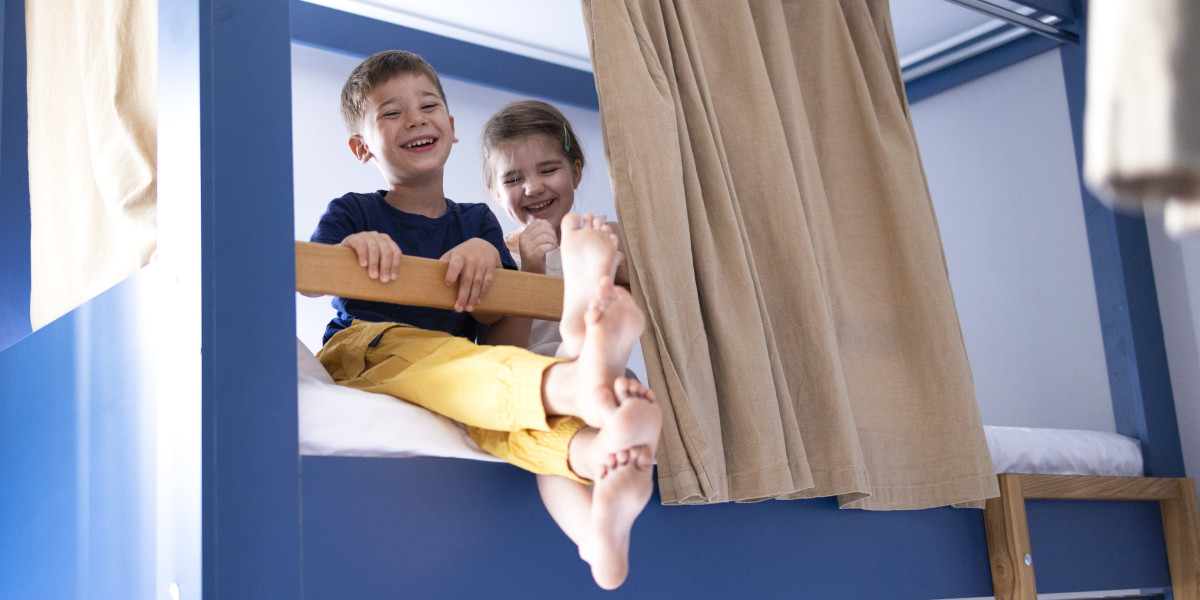The Ultimate Guide to Bunk Beds for Kids: Safety, Styles, and Solutions
Bunk beds have long been a popular option among parents looking for to optimize space in their children's bed rooms. With benefits that go beyond their compact style, bunk beds use an enjoyable and functional sleeping arrangement while motivating sibling bonding and cultivating creativity. In this comprehensive guide, we check out numerous elements of bunk beds for kids, including security factors to consider, different designs offered, and recommendations for selecting the best one for your family.
Why Choose Bunk Beds?
Bunk beds are created to stack one bed on top of another, using vertical space to create more room for play and storage. They are especially useful for families with numerous kids or limited bed room space. Additionally, they provide a daring sleeping environment that kids frequently enjoy.
Key Advantages of Bunk Beds:
- Space-saving design: Ideal for little spaces or shared spaces.
- Economical: Often more inexpensive than buying 2 separate beds.
- Encourages social interaction: Promotes bonding among brother or sisters or friends.
- Versatile alternatives: Available in numerous styles and configurations to match any room design.
Security First: Essential Considerations
When selecting a bunk bed for kids, security ought to be the top priority. The following features are essential for ensuring a secure sleeping environment:
Important Safety Features:
- Sturdy Construction: Ensure that the bed frame is made from durable products such as strong wood or metal.
- Guardrails: Bunk beds need to have guardrails on both sides of the upper bunk to avoid falls.
- Ladder Safety: A tough, integrated ladder or stairs with anti-slip rungs is necessary for safe access to the leading bunk.
- Weight Limit: Check the manufacturer's weight limit capacity for both the leading and bottom bunk.
- Mattress Size: Use the correct mattress size as specified by the bed producer to guarantee a snug fit within the bed frame.
Safety Tips for Parents:
- Monitor Sleep Habits: Teach children the value of not using or jumping off the bunk beds.
- Age Appropriateness: Generally, the upper bunk is ideal for kids aged 6 and older.
- Routine Inspections: Periodically check for any loose bolts, screws, or structural damage.
Styles of Bunk Beds
Bunk beds can be found in a range of styles, allowing moms and dads to select one that matches their child's room design while meeting specific needs. Below are some popular styles:
Popular Bunk Bed Styles:
- Traditional Bunk Beds: Simple and timeless styles made from wood or metal with no extra functions.
- Loft Beds: Features a raised top bunk with space beneath for a desk, play location, or extra storage.
- L-Shaped Bunk Beds: Arranged in an L-shape, typically perfect for corner areas and can have extra storage choices.
- Twin over Full Bunk Beds: A twin bed on top and a larger full-sized bed on the bottom, accommodating children or teens of numerous ages.
- Triple Bunk Beds: Designed to fit 3 beds in a single footprint, perfect for bigger households or pajama parties.
A Comparison of Bunk Bed Styles
| Bunk Bed Style | Description | Best For |
|---|---|---|
| Traditional | Timeless style with 2 stacked beds | Requirement bedroom setups |
| Loft Bed | Raised bed with functional space underneath | Research or play locations |
| L-Shaped | Bunk beds arranged in an L-shape | Corner spaces |
| Twin over Full | Twin bed on top, full bed below | Different age siblings |
| Triple Bunk | Three stacked beds | Big families or sleepovers |
Choosing the Right Bunk Bed
When browsing for the perfect bunk bed, consider the list below factors to guarantee you make an informed choice:
Key Factors to Consider:
- Room Size: Measure the room dimensions to figure out the suitable size and height of the bunk bed.
- Kid's Age: Consider the age of your child(ren) when picking a style and security features.
- Functionality: Think about just how much storage or play space you require and whether the bunk bed must serve extra functions.
- Budget plan: Set a spending plan that includes not only the bunk bed but likewise the required bed mattress and devices like bed linen or security gates.
FAQs About Bunk Beds for Kids
1. What age is appropriate for a kid to sleep in the top bunk?
Typically, kids aged 6 and older need to be able to securely oversleep the top bunk, though you need to constantly consider your child's maturity level.

2. Are bunk beds safe for young children?
It is not a good idea for toddlers or very young children to oversleep the top bunk due to the risk of falling.
3. How do I keep the bunk bed?
Check the bed frequently for any signs of wear and tear, tightening screws, and cleaning up the mattresses to guarantee prolonged security and resilience.
4. Can I convert a bunk bed into 2 different beds?
Numerous bunk beds are developed to be convertible, permitting you to separate the beds when needed. Examine the manufacturer's requirements before buying.
5. How can I maximize space in a bunk bed room?
Make use of under-bed drawers, shelves, or lofted designs to develop extra storage services in a space with a bunk bed.
Bunk beds provide a wonderful mix of enjoyable, functionality, and space-saving utility, making them a perfect choice for young families. By considering security features, various styles, and useful aspects such as room size and age suitability, moms and dads can select the ideal bunk bed for their kid's needs. With the right option, bunk beds can transform a bed room into a wonderful space that encourages play, creativity, and bonding among brother or sisters. Constantly keep in mind to focus on security and maintenance to make the most of this special sleeping plan.



